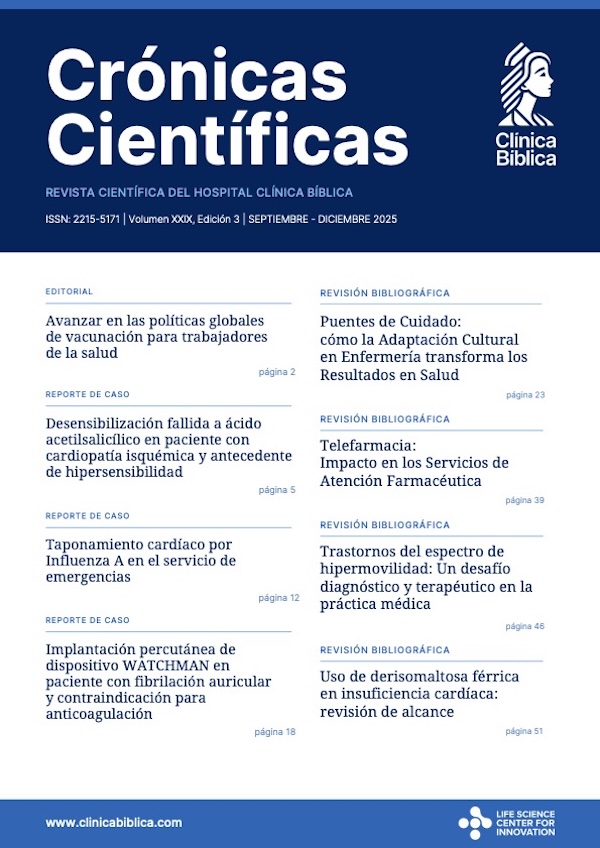- Visto: 1172
Revisión Bibliográfica
Prebióticos en fórmulas infantiles
Prebiotics in infant formulas
Edición XVII Enero - Abril 2021
DOI: https://doi.org/10.55139/PNLR2329
APA (7ª edición)
Martínez Vásquez, J. (2021). Prebióticos en fórmulas infantiles. Crónicas científicas, 17(17), 24-31. https://doi.org/10.55139/PNLR2329.
Vancouver
Martínez Vásquez J. Prebióticos en fórmulas infantiles. Cron cient. 1 de abril 2021; 17(17): 24-31.
Dr. Jorge Martínez Vásquez
Médico y cirujano. Licenciatura en Medicinay Cirugía, Universidad de Costa Rica.
Especialista en Pediatría. Maestría en Nutrición Pediátrica. Universidad de Costa Rica. Miembro del Colegio de Médicos y Cirujanos de Costa Rica. Miembro de la Asociación de Médicos Hospital Clínica Bíblica. San José, Costa Rica. Coordinador del Servicio de Pediatría del Hospital Clínica Bíblica. San José, Costa Rica.
Resumen
La leche humana promueve el desarrollo de una microbiota intestinal saludable y esto es, en gran parte, por los oligosacáridos de la leche humana y su efecto prebiótico. Las fórmulas infantiles han sido adicionadas con sustancias que promueven ese efecto, sin embargo, no todos los prebióticos lo cumplen de manera tan completa como lo hacen los oligosacáridos propios de la leche humana.
Palabras claves
Oligosacáridos, leche humana¸ prebióticos, microbiota.
Abstract
Human milk promotes the development of a healthy gut microbiota and this is largely due to the oligosaccharides in human milk and their prebiotic effect. Infant formulas have been added with substances that promote this effect, however, not all prebiotics fulfill this effect as completely as the oligosaccharides of human milk do.
Keywords
Oligosaccharides, human milk, prebiotics, microbiota.
Bibliografía
Ackerman, D. L., Doster, R. S., Weitkamp, J. H., Aronoff, D. M., Gaddy, J. A. y Townsend, S. D. (2017). Human Milk Oligosaccharides Exhibit Antimicrobial and Antibiofilm Properties against Group B Streptococcus. ACS Infectious Diseases, 3(8), 595-605. https://doi.org/10.1021/ acsinfecdis.7b00064.
Bocquet, A., Lachambre, E., Kempf, C. y Beck, L. (2013). Effect of infant and follow-on formulas containing b lactis and galacto-and fructooligosaccharides on infection in healthy term infants. Journal of Pediatric Gastroenterology and Nutrition, 57(2), 180-187.https://doi.org/10.1097/MPG.0b013e318297f35e.
Bode, L. (2015). The functional biology of human milk oligosaccharides. Early Human Development, 91(11), 619-622. https://doi. org/10.1016/j.earlhumdev.2015.09.001.
Boehm, G., Fanaro, S., Jelinek, J., Stahl, B. y Marini, A. (2003). Prebiotic concept for infant nutrition. Acta Paediatrica, International Journal of Paediatrics, Supplement, 91(441), 64- 67. https://doi.org/10.1111/j.1651-2227.2003. tb00648.x.
Cheng, L., Akkerman, R., Kong, C., Walvoort, M. T. C. y de Vos, P. (2020). More than sugar in the milk: human milk oligosaccharides as essential bioactive molecules in breast milk and current insight in beneficial effects. Critical Reviews in Food Science and Nutrition, 0(0), 1-17. https:// doi.org/10.1080/10408398.2020.1754756.
Conrey, S., Cline, A., Welge, J. y Morrow, A. (2019). Meta-analysis Comparing Bifidobacteria Abundance in Infants Fed Standard or PrebioticJ. Martínez Edición XVII • Crónicas Científicas, Vol. 17, No. 17, Enero - Abril 2021, 24-33, ISSN: 2215-5171 29supplemented Formulas and Exclusively Breastfed (OR01-07-19). Current Developments in Nutrition, 3(Supplement 1), 1745-1747. https://doi.org/10.1093/cdn/nzz040.or01-07- 19.
Doare, K. Le, Holder, B., Bassett, A. y Pannaraj, P. S. (2018). Mother’s Milk: A purposeful contribution to the development of the infant microbiota and immunity. Frontiers in Immunology, 9(FEB). https://doi.org/10.3389/ fimmu.2018.00361.
Fukuda, S., Toh, H., Hase, K., Oshima, K., Nakanishi, Y., Yoshimura, K., Tobe, T., Clarke, J. M., Topping, D. L., Suzuki, T., Taylor, T. D., Itoh, K., Kikuchi, J., Morita, H., Hattori, M. y Ohno, H. (2011). Bifidobacteria can protect from enteropathogenic infection through production of acetate. Nature, 469(7331), 543-549. https:// doi.org/10.1038/nature09646.
Goehring, K. C., Marriage, B. J., Oliver, J. S., Wilder, J. A., Barrett, E. G. y Buck, R. H. (2016). Similar to Those Who Are Breastfed, Infants Fed a Formula Containing 2′-Fucosyllactose Have Lower Inflammatory Cytokines in a Randomized Controlled Trial. The Journal of Nutrition, 146(12), 2559-2566. https://doi.org/10.3945/ jn.116.236919.
Guo, S., Gillingham, T., Guo, Y., Meng, D., Zhu, W., Allen Walker, W. y Ganguli, K. (2017). Secretions of bifidobacterium infantis and lactobacillus acidophilus protect intestinal epithelial barrier function. Journal of Pediatric Gastroenterology and Nutrition, 64(3), 404-412. https://doi. org/10.1097/MPG.0000000000001310.
He, Y. Y., Liu, S. B., Kling, D. E., Leone, S., Lawlor, N. T., Huang, Y., Feinberg, S. B., Hill, D. R. y Newburg, D. S. (2016). The human milk oligosaccharide 2′-fucosyllactose modulates CD14 expression in human enterocytes, thereby attenuating LPS-induced inflammation.
Gut, 65(1), 33-46. https://doi.org/10.1136/ gutjnl-2014-307544.
Jantscher-Krenn, E., Zherebtsov, M., Nissan, C., Goth, K., Guner, Y. S., Naidu, N., Choudhury, B., Grishin, A. V., Ford, H. R. y Bode, L. (2012). The human milk oligosaccharide disialyllactoN-tetraose prevents necrotising enterocolitis in neonatal rats. Gut, 61(10), 1417-1425. https:// doi.org/10.1136/gutjnl-2011-301404.
Knol, J., Scholtens, P., Kafka, C., Steenbakkers, J., Groß, S., Helm, K., Klarczyk, M., Schöpfer, H., Böckler, H. M. y Wells, J. (2005). Colon microflora in infants fed formula with galacto- and fructo-oligosaccharides: More like breast-fed infants. Journal of Pediatric Gastroenterology and Nutrition, 40(1), 36-42. https://doi. org/10.1097/00005176-200501000-00007.
Kong, C., Elderman, M., Cheng, L., de Haan, B. J., Nauta, A. y de Vos, P. (2019). Modulation of Intestinal Epithelial Glycocalyx Development by Human Milk Oligosaccharides and NonDigestible Carbohydrates. Molecular Nutrition and Food Research, 63(17). https://doi. org/10.1002/mnfr.201900303.
Kuntz, S., Rudloff, S. y Kunz, C. (2008). Oligosaccharides from human milk influence growth-related characteristics of intestinally transformed and non-transformed intestinal cells. British Journal of Nutrition, 99(3), 462-471. https://doi.org/10.1017/S0007114507824068.
Kurakevich, E., Hennet, T., Hausmann, M., Rogler, G. y Borsig, L. (2013). Milk oligosaccharide sialyl(α2,3) lactose activates intestinal CD11c+ cells through TLR4. Proceedings of the National Academy of Sciences of the United States of America, 110(43), 17444-17449. https://doi. org/10.1073/pnas.1306322110
Lewis, E. D., Richard, C., Larsen, B. M. y Field, C. J. (2017). The Importance of Human Milk Revisión Bibliográfica PREBIÓTICOS EN FÓRMULAS INFANTILES 30 Edición XVII • Crónicas Científicas, Vol. 17, No. 17, Enero - Abril 2021 for Immunity in Preterm Infants. Clinics in Perinatology, 44(1), 23-47. https://doi. org/10.1016/j.clp.2016.11.008.
Manthey, C. F., Autran, C. A., Eckmann, L. y Bode, L. (2014). Human milk oligosaccharides protect against enteropathogenic escherichia coli attachment in vitro and EPEC colonization in suckling mice. Journal of Pediatric Gastroenterology and Nutrition, 58(2), 165-168. https://doi.org/10.1097/ MPG.0000000000000172.
Moro, G., Minoli, I., Mosca, M., Fanaro, S., Jelinek, J., Stahl, B. y Boehm, G. (2002). Dosagerelated bifidogenic effects of galacto- and fructooligosaccharides in formula-fed term infants. Journal of Pediatric Gastroenterology and Nutrition, 34(3), 291-295. https://doi. org/10.1097/00005176-200203000-00014.
Puccio, G., Alliet, P., Cajozzo, C., Janssens, E., Corsello, G., Sprenger, N., Wernimont, S., Egli, D., Gosoniu, L. y Steenhout, P. (2017). Effects of infant formula with human milk oligosaccharides on growth and morbidity: A randomized multicenter trial. Journal of Pediatric Gastroenterology and Nutrition, 64(4), 624-631. https://doi.org/10.1097/ MPG.0000000000001520.
Risk, H., Ranucci, G., Id, V. B., Borgia, E., Piacentini, D., Visentin, F., Cantarutti, L., Baiardi, P., Id, M. F., Spagnuolo, M. I., Zanconato, S., Baraldi, E., Giaquinto, C. y Guarino, A. (2018). Formula Protects against Respiratory Infections in Clinical Trial. Nutrients, 3(10), 286. https:// doi.org/10.3390/nu10030286.
Rudloff, S., Pohlentz, G., Borsch, C., Lentze, M. J. y Kunz, C. (2012). Urinary excretion of in vivo 13C-labelled milk oligosaccharides in breastfed infants. The British Journal of Nutrition, 107(7), 957-963. https://doi.org/10.1017/ S0007114511004016
Ruiz-Palacios, G. M., Cervantes, L. E., Ramos, P., Chavez-Munguia, B. y Newburg, D. S. (2003). Campylobacter jejuni binds intestinal H(O) antigen (Fucα1, 2Galβ1, 4GlcNAc), and fucosyloligosaccharides of human milk inhibit its binding and infection. Journal of Biological Chemistry, 278(16), 14112-14120. https://doi. org/10.1074/jbc.M207744200.
Sims, I. M. y Tannock, G. W. (2020). Galactoand fructo-oligosaccharides utilized for growth by cocultures of bifidobacterial species characteristic of the infant gut. Applied and Environmental Microbiology, 86(11). https:// doi.org/10.1128/AEM.00214-20.
Szajewska, H., Ruszczyński, M., Szymański, H., Sadowska-Krawczenko, I., Piwowarczyk, A., Rasmussen, P. B., Kristensen, M. B., West, C. E. y Hernell, O. (2017). Effects of infant formula supplemented with prebiotics compared with synbiotics on growth up to the age of 12 mo: A randomized controlled trial. Pediatric Research, 81(5), 752-758. https://doi.org/10.1038/ pr.2017.5.
Wang, C., Zhang, M., Guo, H., Yan, J., Liu, F., Chen, J., Li, Y. y Ren, F. (2019). Human Milk Oligosaccharides Protect against Necrotizing Enterocolitis by Inhibiting Intestinal Damage via Increasing the Proliferation of Crypt Cells. Molecular Nutrition and Food Research, 63(18), 1-12. https://doi.org/10.1002/ mnfr.201900262.
Wu, R. Y., Li, B., Koike, Y., Määttänen, P., Miyake, H., Cadete, M., Johnson-Henry, K. C., Botts, S. R., Lee, C., Abrahamsson, T. R., Landberg, E., Pierro, A. y Sherman, P. M. (2019). Human Milk Oligosaccharides Increase Mucin Expression in Experimental Necrotizing Enterocolitis. Molecular Nutrition and Food Research, 63(3), 1-29. https://doi.org/10.1002/ mnfr.201800658.
APA (7ª edición)
Martínez Vásquez, J. (2021). Prebióticos en fórmulas infantiles. Crónicas científicas, 17(17), 24-31. https://doi.org/10.55139/PNLR2329.
Vancouver
Martínez Vásquez J. Prebióticos en fórmulas infantiles. Cron cient. 1 de abril 2021; 17(17): 24-31.
Esta obra está bajo una licencia internacional Creative Commons: Atribución-NoComercial-CompartirIgual 4.0 Internacional (CC BY-NC-SA 4.0)

Realizar búsqueda
Última Edición
Ediciones Anteriores






